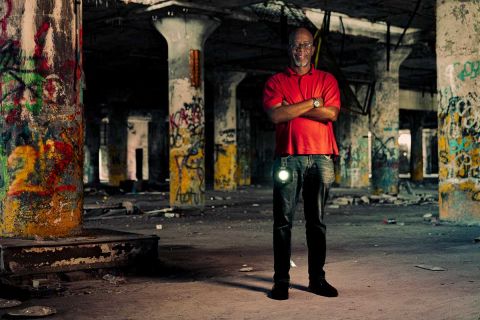There are several examples in metro Detroit: new industrial parks in southwest Detroit, an Amazon fulfillment center in Shelby Township, a home improvement store in Wixom.
“Ultimately what they’re doing is getting that land put back into great use for the community and bringing in some major employers and creating great paying jobs,” said Vicky Rowinski, planning and economic director for Macomb County.
A funding model
Much of the work is supported by tax increment financing (TIF), which is a way to capture future taxes to reimburse developers for the added costs of contaminated sites. The formula is based on the presumption that the first year of taxes on blighted property will be the lowest and improvements will raise its value.
“At its simplest,” Vosberg said, TIF funding “freezes the taxes at the unrenovated rate of buildings.”
Last year, $77 million in tax-captures were authorized in Michigan under a brownfield TIF, according to the state. In the same period, the state awarded $13.5 million in grants to developers of 24 brownfield projects.
Another 51 sites were approved this year through July by the Michigan Economic Development Corporation, moves expected to generate $3.4 billion in investment and 5,000 jobs, based on funding applications.
Advocates say TIF funding can change the fortunes of blighted communities.
Vacant auto factories can “make neighborhoods not pleasant to live in at best, and sometimes they drive people to move,” Vosberg said.
Everyone pays but the source
But critics say it’s one more way for taxpayers to be stuck with the bill for pollution left behind by a powerful industry.
Some “companies that we’ve subsidized and (which) leave these places a mess, we’re then providing other companies subsidies to clean their mess up,” said Rep. Dylan Wegela, D-Garden City, a critic of billions of dollars in state incentives being spent to lure large-scale manufacturing to Michigan.
That’s what’s happening with the old Buick City site in Flint.
This spring, Ashley Capital broke ground on the first in a series of spec-built light industrial and warehouse buildings it plans for the Flint site, the state’s largest brownfield. The site was among the properties GM abandoned when it entered bankruptcy in 2009.
Susan Harvey, Ashley Capital’s senior vice president, said she understands why some developers aren’t interested in contaminated sites. But it made sense for Ashley.
“If you’re a developer, and all you’ve done is greenfield sites, and there’s one available, it is easier, it is faster,” Harvey said. “But once you understand the process, I think you understand the value in a brownfield development.”
When completed, the Buick City project, called the Flint Commerce Center, is expected to employ 3,000 people — a potentially massive boost for a struggling city.
But even after $31 million and counting from a federal bankruptcy trust to clear PFAS and other pollutants GM left behind, the site still needed another $15 million in public subsidies to remove underground utilities and concrete rubble. And this summer, Flint approved $72 million in tax abatements for Ashley Capital.
On the ground
Detroit’s industrial roots mean it has more contaminated properties than most places. The state’s easing of pollution laws in the mid-1990s made it easier to transform tainted sites by allowing developers to contain pollution in the ground rather than undertaking the larger expense of removing it.
While that move was good for developers, environmentalists contend it sacrificed the public’s right to a clean environment.
In recent years, metro Detroit’s industrial market has heated up. That provides hope for some long-forgotten factory sites, even in urban centers like Detroit. The sites already have infrastructure in place and a local workforce, noted Justin Robinson, executive vice president at the Detroit Regional Partnership, which promotes southeast Michigan development sites.
The challenge is that suppliers want to be close to where battery and assembly plants are rising. And in the past two years, Michigan has awarded incentive packages totaling more than $3.2 billion — including grant payments of $625 million — for the building of EV mega-plants on rural farmland in Marshall, Delta Township and Big Rapids.
Which makes the second life of another former auto plant — the Cadillac Stamping factory in Detroit — a happy outlier. General Motors closed the plant in the 1980s and later sold it, with the city eventually taking ownership in foreclosure. It seemed an unlikely candidate for EV redevelopment.
Read the full article here









